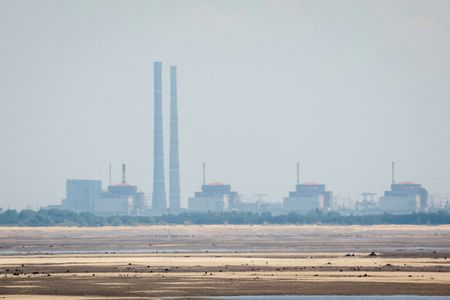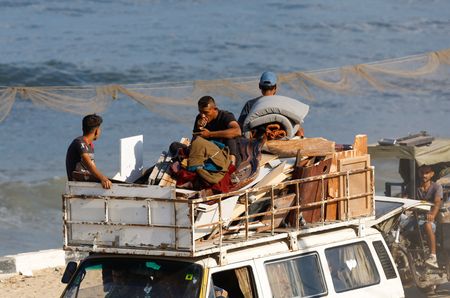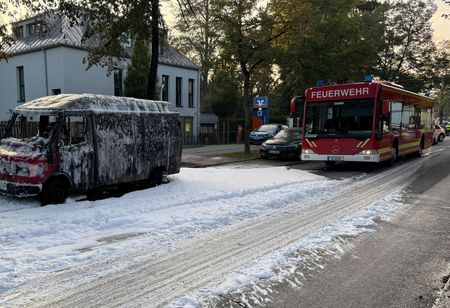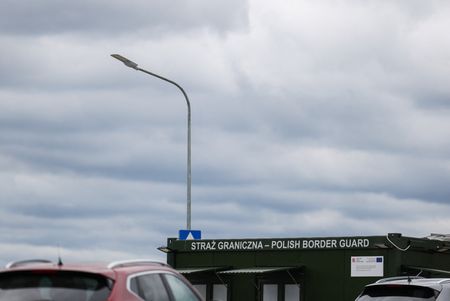By Guy Faulconbridge
MOSCOW (Reuters) -The vast Soviet-built Zaporizhzhia nuclear power plant in southern Ukraine is being cooled by emergency diesel generators for a ninth day after an external power line was severed, its Russian management said on Wednesday.
Russia’s state RIA news agency cited the plant’s Russian-installed management as saying that backup electricity supply was sufficient for now, but that resumption of a regular electricity supply via an external source – the Dneprovskaya line – was impossible due to Ukrainian shelling.
Ukraine in turn has said that Russian shelling is preventing the restoration of external power.
Fighting an intense drone and artillery war around several vast Soviet-era nuclear power stations in Ukraine has repeatedly triggered grave warnings from the United Nation’s nuclear agency, the International Atomic Energy Agency (IAEA), about the danger of a major nuclear accident.
The last remaining external power line to the Zaporizhzhia plant, Europe’s largest nuclear power station, was cut during fighting on Sept. 23.
Power is needed to pump water around the plant to cool the reactors and spent fuel. Radiation levels are normal, the IAEA and Russia said.
“Europe’s largest nuclear power plant has been without external power for more than a week now, which is by far the longest lasting such event during more than three and a half years of war,” IAEA Director General Rafael Grossi said.
The plant’s Russian management was cited as saying that the emergency generators were sufficient for now and that only some of them were being used. All equipment was functioning as normal, it said.
The Zaporizhzhia plant has six Soviet-designed VVER-1000 V-320 water-cooled and water-moderated reactors containing Uranium 235. All reactors are currently shut down so are cooler than usual.
The risk is that without any power – external or supplied by the emergency generators – the nuclear fuel which sits just 500 km (300 miles) from the site of the world’s worst nuclear accident, the 1986 Chornobyl disaster, would not be cooled and would risk a melt down.
“The current status of the reactor units and spent fuel is stable as long as the emergency diesel generators are able to provide sufficient power to maintain essential safety-related functions and cooling,” Grossi said.
“It is extremely important that offsite power is restored.”
Russian forces seized the plant in 2022 shortly after President Vladimir Putin sent tens of thousands of troops into Ukraine. Russia has controlled the plant ever since.
(Reporting by Reuters, Writing by Guy Faulconbridge; editing by Andrew Osborn)











